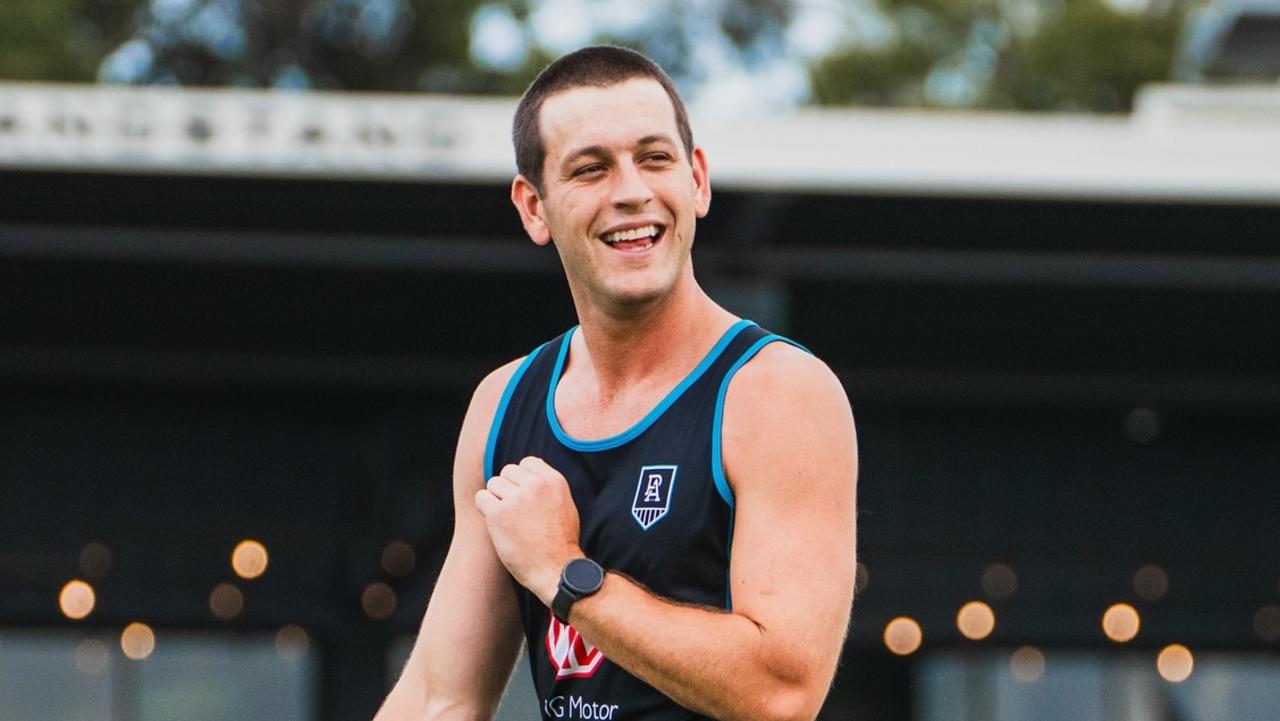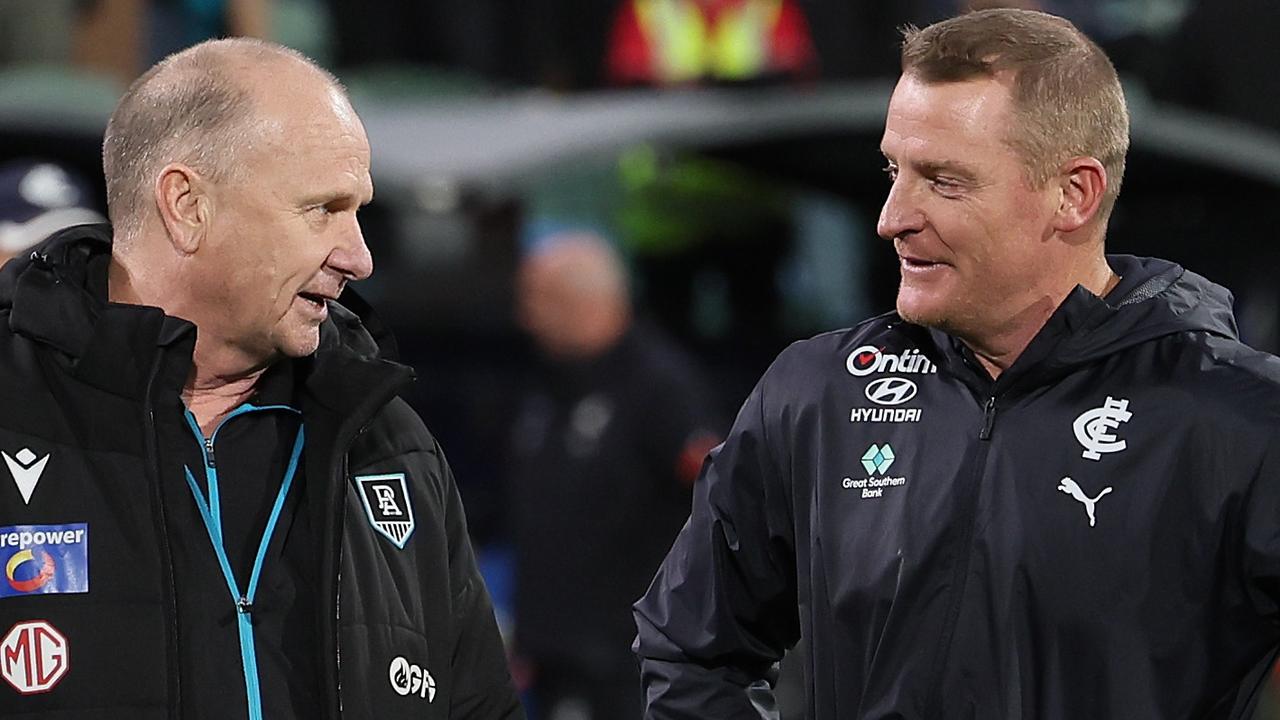The evolution of the AFL All-Australian team from 1877 to today
All-Australian selection is the modern mark of AFL excellence, but it was a long and winding road to recognising footy’s best by position each year writes SHANNON GILL.

AFL
Don't miss out on the headlines from AFL. Followed categories will be added to My News.
It has become the ultimate indicator of AFL individual excellence and the accolade that adds years and 100 of 1000s of dollars to contracts.
A Brownlow can only be won by midfielders, so in modern football an All Australian jacket has become the true mark of AFL players.
Get in once and you’ve made it. Get back multiple times and you’re a champion. If you make it a career habit, that’s how hall of fame comparisons are made.
Yet it hasn’t always been like this, the nation of an all-Australian or VFL/AFL team of the year has gone through various iterations and levels of credibility to get where it is today.

‘All Rounders’ and ‘Goal Sneaks’
The first ever proto-version of what we now know as the All Australian team dates all the way back to 1877.
The Australian newspaper named its ‘Champions of the Colony’, and some would say it’s a more relevant way of picking a team in 2024 than the traditional positions we follow. It simply consisted of a group of players selected in each positional category; best followers, backs, half backs, centre forwards, wings and forwards.
By 1881 there was further evolution.
The ‘best three’ players were picked then, players were picked under the followers, backs, all-rounders, wings, forwards and goal-sneaks categories. ‘Goal Sneaks’ being the full forwards of latter days.
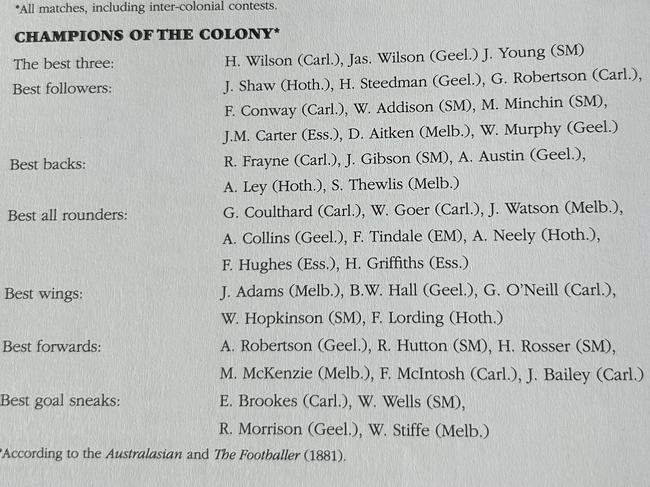
The first team of excellence in position as we know it was selected by the Argus newspaper in 1895. They picked a positional team of backs, centres, forwards, followers and rovers, written as a monthly feature named ‘Cracks of the Month’.
The First All-Australians – all codes welcome
There were 57 plaques given out the first time an all-Australian team was selected but it was’; t restricted to one code. In 1947 the Sporting Life Magazine decided that taking the US approach of All-American teams it would be worthy to designate the best players in every major Australian football code (Australian rules, Rugby League, Rugby Union and Soccer) via an ‘All Australian team’ for each. Clearly we were above code wars in 1947.
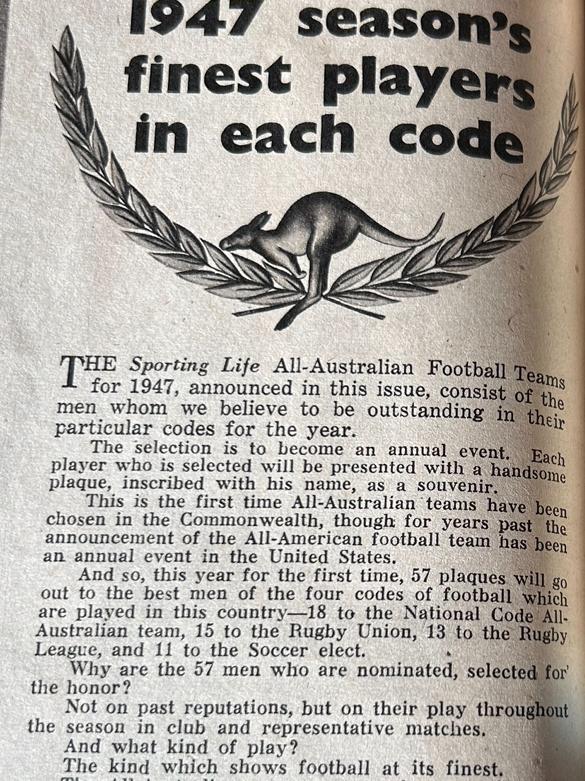
It was an enlightened idea on many fronts.
The Sporting Life made a point that it would be picked “not on past reputations, but on their play throughout the season in club and representative matches.”
It was also done nationally across various leagues.
“Sporting Life is not concerned with state boundaries. The All-Australians have been chosen subjectively,” reads its earnest mission statement.
So in addition to the other codes the ‘first’ all-Australian Aussie rules team included Lou Richards from the VFL, Merv McIntosh from the WAFL and Bob Hank from the SANFL.
The Sporting Life teams ended in 1955, but concurrently the practice of picking a squad of ‘all-Australian’ players from national carnivals based on their play in representative matches between the states was established.
15 squads of players were picked from 1953 through to 1988, and players were known as All-Australians, but that meaning would change.
VFL Team of the Year and the mystery of 1985
It took until 1982 for the VFL to formalise the idea of picking a team of the year. The league released its first edition of the ‘VFL Yearbook’ in early 1983, billed as the ‘Football Wisden.
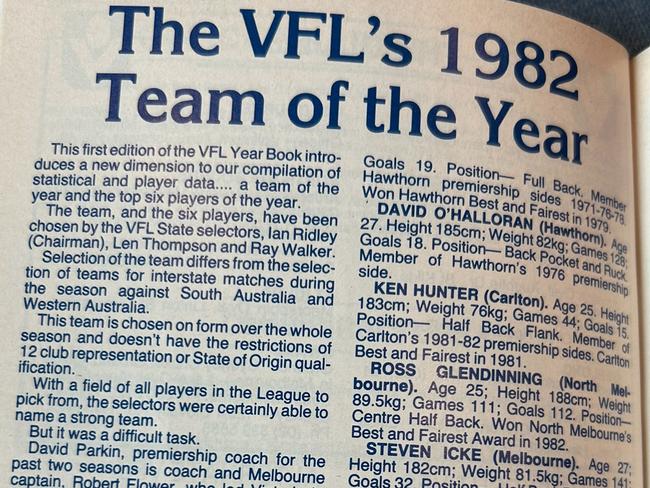
One of its major drawcards was naming a ‘Team of the Year’ selected by the VFL State selectors, but not encumbered by State of Origin or all-club representation.
It was the first time the league would make a bona fide effort to recognise excellence across the ground.
This would continue up until 1990, so if looking at things from a VFL/AFL continuation perspective, the equivalence to all-Australian selection today is accurate.
However it still wasn’t taken that seriously.
In 1986 there was no yearbook produced, which means there is no 1985 VFL Team of the Year recorded.
Thankfully that much-loved and now-defunct publication, Inside Football, did name a team of the year in 1985, and in fact named a team of the year under virtually the same criteria stretching all the way back to 1971.
It was conducted via ‘a panel of experts’, which most likely included their star columnist Ted Whitten who also happened to be a selector for VFL Team of the Years during the era.
That missing year is a real hole.
If the 1985 Inside Football team was recognised in lieu of there being a VFL team, Greg Williams, Paul Roos and Simon Madden would all be elevated to seven all-Australian/ Team of the Year seasons.
If you were to go back to 1971 and recognise all the Inside Football teams when there was no VFL team announced, Leigh Matthews would have a staggering eleven end of season team gongs. Bruce Doull and Keith Greig would have seven and Kevin Bartlett would have six.
The VFL did try to make up for that oversight in 1986 by not only naming a team of the year, but also co-ordinating a VFL coaches selected team of the year. If you count Inside Football’s team, a player could have walked away with three honours in the one season.
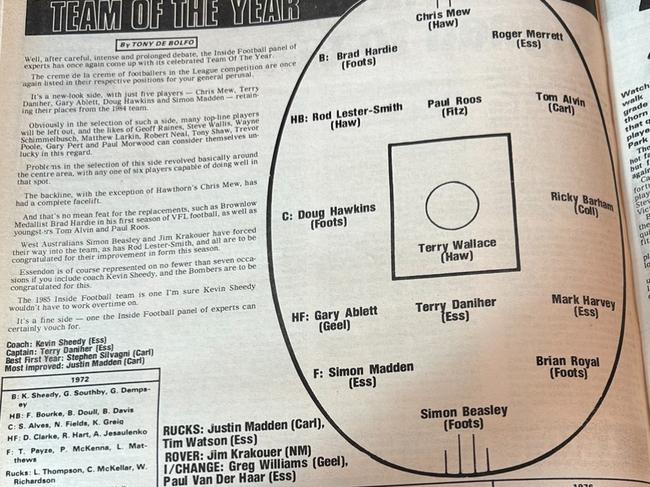
The AFL’s all-Australian team
With the introduction of the Adelaide Crows in 1991 came the All Australian team as we now know it. A team named ‘All Australian’ from a competition that included teams from Victoria, Western Australia, South Australia, New South Wales and Queensland.
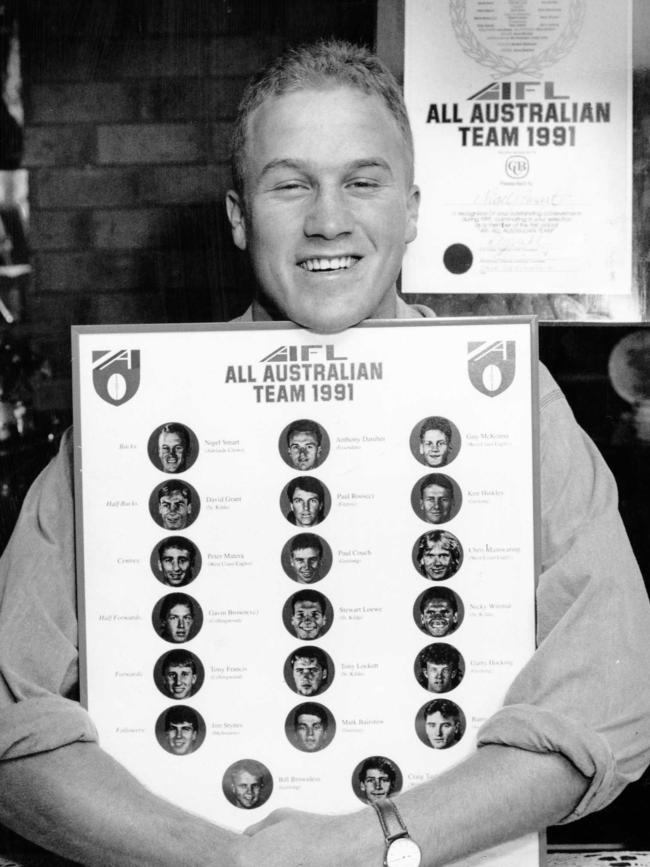
There were still some quirks though, the criteria for the first team included performances in the pre-season competition as well as the AFL season proper.
Over the ensuing 34 years it has built credibility to today’s exalted stature, and the institution of an AFLW all-Australian in its inaugural season means there will be no guessing games for AFLW historians of the future.
Yet in the early days not everyone was a fan of how the selectors were executing the task.
The 1992 team came in for harsh criticism from Mike Sheahan for it being “a collection of 20 top players rather than the players who most deserve the 20 positions in a football team.”
“When is a celebrity selection panel going to meet its brief?” he asked.
Most upsetting for Sheahan was Paul Roos being picked at full back, Dean Kemp and Mick McGuane on wings, Barry Stoneham at centre half back and Robert Harvey on the half forward flank. These were not the positions they played, Sheahan protested.
The selectors that time were Ted Whitten, Russell Ebert, Mal Brown, Gerard Healy and Ricky Quade.
Sheahan went on to say that “the All Australian concept is worth fostering, but it needs more attention.”
He was right.
It was worth fostering and it eventually got significantly more attention.
But the arguments over positional selections? They will never end.
More Coverage
Originally published as The evolution of the AFL All-Australian team from 1877 to today




